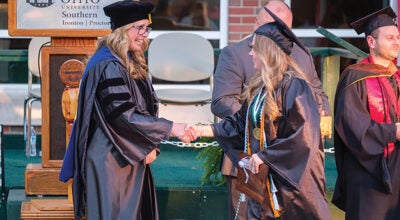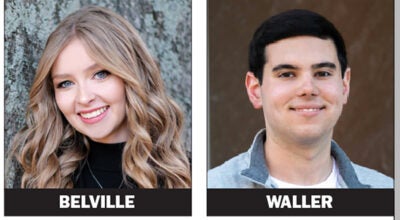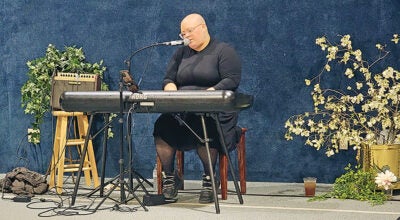South Point resident visits ‘Real Russia’
Published 11:05 am Thursday, June 24, 2010
With a little help from his friends, David Classing got to see Russia the way it was meant to be seen.
Classing has lived in South Point all his life, but has always been interested in Russian history. His girlfriend, Irina Presnyakova, lives in Russia and encouraged him to show people “the real Russia.”
“The real Russia,” as Classing put it, is full of cultural diversity. Most people still associate Russia with a cold, barren Communist wasteland.
Classing said that this is not the case.
“Regardless of our stereotypes of Russian people, they smile, they are dedicated to their friends and family, and they are extremely helpful. They dress impeccably and they know a lot about world affairs and politics.
He described the city of Kazan, a place rich in history, with very accommodation people.
“Kazan, the capital of the Republic of Tatarstan, just celebrated its 1,000th birthday. It was the site in medieval times of intense fighting among the Tatars and the Russians. Kazan is the eighth largest city in Russia, and lies in the area where two rivers meet: the Volga and Kazanka. After many years of battles, Ivan the Terrible conquered Kazan for Russia in 1552, and many Tatars’ cultural palaces and mosques were destroyed.
“On my last evening in Kazan, we visited a Russian Orthodox Monastery which had been confiscated by the Communists and turned into a youth prison. Sometime after Communism collapsed, the monastery was given back to the church. Vladimir Korbalev, a veteran of the Chechen War, told of the time when the monks first settled here that the frogs in the nearby lake ruined the silence for the monks, so they prayed for the frogs to be silent. Even today with thousands of frogs in the lake, he told me, they still do not croak.
Classing also took a train to the village of Arsk. He said he was reminded of home.
“After eating lunch, our party took a walk around Arsk, which is not much different from walking around South Point, with one exception. People’s livestock — cows, chickens and goats — were also walking around on the street at times. In a way, it was surreal, but fresh.
“After the walk around Arsk, we sat down to another Russian tradition. A barbecue Rashid’s wife cooked shashlik, Russian for kebobs, over a birch wood-fired grill. We ate pork, ate a potato dish and more fresh herbs and vegetables and drank hot tea. The food in Arsk, all traditional Russian and Tatar, was absolutely delicious.
Classing also visited St. Petersburg, which is called the “Window to Europe.”
“Saint Petersburg is a beautiful city, with a laid back attitude. Words cannot describe the beauty of the Neva River, the Gulf of Finland, and the many bridges. It is very easy to navigate public transportation and walk to points of interest. Though we saw many sites in the city, including the Hermitage, Decembrists Square, Palace Square, the cruiser Aurora, Tsarskoe Selo, and various churches and cathedrals, a few sites left an endearing mark on me.
One of the most memorable sites Classing said he visited was the Piskarvskoe Memorial Cemetery, which is in the northern outskirts of St. Petersburg. This cemetery is the burial site for the 500,000 citizens of St. Petersburg who were killed by starvation during the German Nazi siege during World War II. In Russia, WWII is called the Great Patriotic War.
“Before entering the cemetery, one enters the memorial hall, where photographs and diaries of residents are displayed of the siege. Also on display is a piece of bread, about 125 grams, which was a day’s ration for a St. Petersburg resident during the siege. In addition to the bread ration, many residents boiled wood and leather, so that any glue residue would separate. They would eat this glue as well, and there was a piece of it on display next to the bread.
“As we walked toward the Mother Russia statue at the front of the cemetery, we were surrounded by 186 mounds of mass graves. No one knows who is buried here because during the height of the siege, people were dying at such a rate that mass graves were the only way to bury them.
Classing spent ten days on his trip to Russia. He said he plans on taking another trip next year to visit some different Russian landmarks.
“After spending some time in ‘real Russia’ with ‘real Russians’, I appreciate what President Kennedy said about Russian and American citizens after the Cuban missile crisis; ‘For in the final analysis, our most basic common link is that we all inhabit this small planet. We all breathe the same air. We all cherish our children’s futures. And we are all mortal.”





